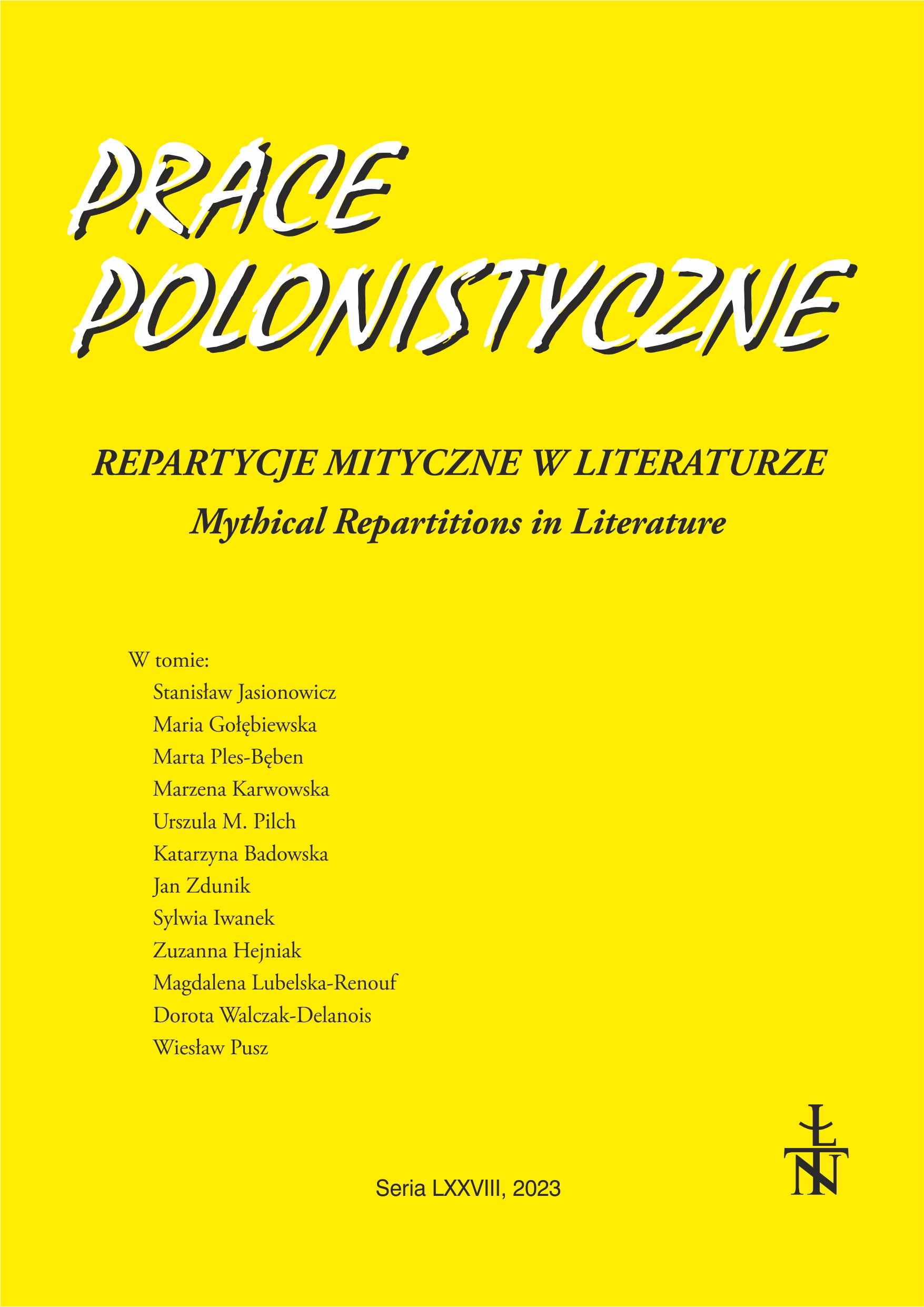The “Sacred Story” of Holowacz, the hero of Hutsul Highlands in Stanisław Vincenz’s "The Truth of the Ages"
DOI:
https://doi.org/10.26485/PP/2023/78/8Keywords:
a sacred story; the sacrum; evil; good; identityAbstract
The article examines the mythization of the story of Holowacz – one of the most wellknown bandits of the Hutsul region – in Stanisław Vincenz’s The Truth of the Ages, which is the first part of the tetralogy On the High Uplands. Taking recourse to the works of Mircea Eliade and Carl Jung, Iwanek studies the role of archetypes and myths taken from prehistoric religions in the creation of the character of Holowacz.
At the turn of the twentieth century, humanity faced war and destruction, which is why people started to ask questions about the meaning of life, God’s existence, as well as good and evil. When Nietzsche announced the death of God, and Weber wrote about the disenchantment of the world, Vincenz, an insightful observer of reality, began to create his life’s work, On the High Uplands, in which he presented an alternative to the trends that were popular at the time. The first volume, The Truth of the Ages, is set in a mythical space inhabited by humans who remain in constant touch with the sphere of the sacrum. Vincenz alludes to a wealth of myths to present the reader with alternative ways out of a seemingly hopeless situation.
Creating the character of Holowacz, who encounters the Devil incarnate (Pol. Bies), Vincenz made numerous additions to the original story. His aim was to show a way out to a person who directly confronts evil. Alluding to the myths of paradise, the myths of origin, and heroic myths, Vincenz presents the reader with a “sacred story”, which may serve as a parenesis for people of the twentieth and twenty-first centuries.
References
Caillois Roger. 2009. Człowiek i sacrum. Przeł. Anna Tatarkiewicz, Ewa Burska. Warszawa: Oficyna Wydawnicza Volumen.
Eliade Mircea. 1994. Mity, sny i misteria. Przeł. Krzysztof Kocjan. Warszawa: Wydawnictwo KR.
Eliade Mircea. 1997a. Inicjacja, obrzędy, stowarzyszenia tajemne. Przeł. Krzysztof Kocjan. Kraków: Znak.
Eliade Mircea. 1997b. W poszukiwaniu historii i znaczenia religii. Przeł. Agnieszka Grzybek. Warszawa: Wydawnictwo KR.
Eliade Mircea. 1998. Aspekty mitu. Przeł. Piotr Mrówczyński. Warszawa: Wydawnictwo KR.
Eliade Mircea. 1999. Sacrum i profanum. Przeł. Robert Reszke. Warszawa: Wydaw= nictwo KR.
Girard René. 1993. Sacrum i przemoc. Przeł. Maria i Jacek Plecińscy. Poznań: Brama.
Henderson Joseph L. 2018. Starożytne mity i człowiek współczesny. W: Gustav Carl Jung. Człowiek i jego symbole. Przeł. Robert Palusiński. Katowice: Wydawnictwo KOS. S. 146–216.
Kaczmarek Kamil M. 2016. Religijne odczarowanie świata a powstanie nauki. „Humanistyka i Przyrodoznawstwo”, nr 22. S. 57–74 [online]. Protokół dostępu: http://cejsh.icm.edu.pl/cejsh/element/bwmeta1.element.desklight-c51f5410-c997-4ea5-818c-435e53ea8c0c [19.02.2022].
Madyda Aleksander. 1992. W poszukiwaniu jedności człowieka i świata. Folklor w twórczości Stanisława Vincenza. Toruń: Wydawnictwo TNT.
Miller Alice. 2006. Gdy runą mury milczenia. Przeł. Jadwiga Hockuba. Poznań: Media Rodzina.
Nowaczyński Piotr. 2003a. O „Prawdzie starowieku”. Struktura – mit – idee. W: Vincenz i krytycy. Antologia tekstów. Red. Piotr Nowaczyński. Lublin: Wydawnictwo UMCS. S. 305–324.
Nowaczyński Piotr. 2003b. Mądrość Vincenza. Lublin: Wydawnictwo KUL.
Ołdakowska-Kuflowa Mirosława. 2006. Stanisław Vincenz. Biografia. Lublin: Wydawnictwo KUL.
Otto Rudolf. 1993. Świętość. Elementy racjonalne i irracjonalne w pojęciu bóstwa. Przeł. Bogdan Kupis. Wrocław: Thesaurus Press.
Pismo Święte Starego i Nowego Testamentu. 2007. Poznań: Pallotinum.
Vincenz Stanisław. 1936. Prawda starowieku: obrazy, dumy i gawędy z Wierchowiny Huculskiej. Warszawa: „Rój”.
Vincenz Stanisław. 1983a. Barwinkowy wianek. Warszawa: Instytut Wydawniczy PAX.
Vincenz Stanisław. 1983b. Po stronie dialogu. T 1. Warszawa: Państwowy Instytut Wydawniczy.
Vincenz Stanisław. 1993. Outopos. Zapiski z lat 1938–1944. Wrocław: Wydawnictwo Dolnośląskie.
Vincenz Stanisław. 2002. Prawda starowieku. Sejny: Pogranicze.
Downloads
Published
How to Cite
Issue
Section
License
Copyright (c) 2023 Łódzkie Towarzystwo Naukowe

This work is licensed under a Creative Commons Attribution-NonCommercial-NoDerivatives 4.0 International License.



